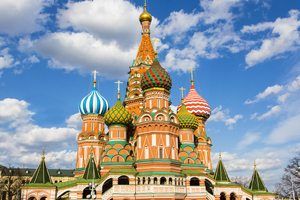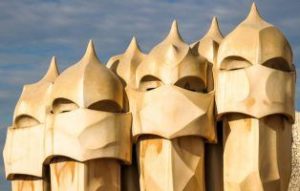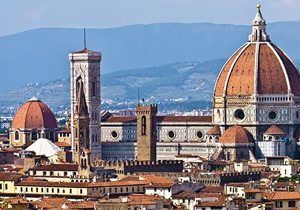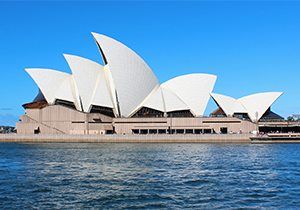Argentina facts!
We’re off to South America to find out all about this amazing country!
Get the lowdown on one of Latin America’s coolest countries with our fascinating Argentina facts!
Argentina facts
OFFICIAL NAME: Argentine Republic
FORM OF GOVERNMENT: Federal republic
CAPITAL: Buenos Aires
POPULATION: 42, 782, 320
OFFICIAL LANGUAGES: Spanish, English, Italian, German, French
MONEY: Argentine peso
AREA: 1,073,518 square km
Argentinian flag

Map of Argentina

Argentina: geography and landscape
Argentina is a vast country located in the southern part of South America. It is the second largest country in South America after Brazil, and the eighth largest country in the world.
To the west, the towering Andes mountains create a natural 5,142km high border with Chile, and the eastern border of the country is the Atlantic Ocean. In the northern region, the country shares borders with Bolivia, Paraguay, Brazil and Uruguay, and the eastern border is the Atlantic Ocean.
To the east of the Andes, the interior of the country is flat, fertile grassland. This area, called the Pampas, is the agricultural heartland of Argentina.
Northeast Argentina features rainforests and Iguazu Falls. Located on Argentina’s border with Brazil, this spectacular waterfall descends along a 2.7km front in a horseshoe shape. Sadly, as the country develops it is being affected by deforestation and pollution.
Altogether, the country is divided into four regions – the Andes, the Pampas, the north and Patagonia, which covers the southern part of the country.

Nature and wildlife in Argentina
Argentina is super-rich in animal species. The coast of Patagonia is home to elephant seals, fur seals, penguins and sea lions. Sharks, orcas, dolphins and salmon swim in the waters off the Atlantic coast.
The north of Argentina is home to flamingos, toucans, turtles, tortoises, and crocodiles and caimans, too! There are also many large cat species such as the cougar, jaguar and the ocelot.
Patagonia is a sparsely populated area rich in natural resources and wildlife, including herons, condors, pumas, tortoises and guanacos – elegant animals closely related to llamas and alpacas.

The history of Argentina
The Spanish arrived in 1516 and ruled the country for 300 years. In 1806, a British force overpowered Spanish military in Buenos Aires (Argentina’s capital city) and attacked the Falkland Islands, also called the Malvinas Islands. Local residents later recaptured the capital, but never regained control of the Falklands. These events led to the loosening of Spain’s grip on the country, and in 1816 Argentina claimed its independence.
In 1946, Juan Peron became president due to his popularity with the working class. His wife, Eva (known as Evita), formed a foundation and gave out money and benefits to the poor. She became a symbol of hope to all the poor people of Argentina, and her death in 1952 was considered a great tragedy. Three years later, Juan Peron was forced out of office after he tried to increase his powers.
Following many violent years and near civil war, Peron was re-elected president in 1973 and his new wife, Isabel, became vice president. Peron’s sudden death in 1974 meant Isabel became president, and soon after, the country’s economy fell apart.

The military took control of the country in 1976, triggering what’s known as the “dirty war“. Between 1976-1983, one of the most violent and devastating periods in Argentina’s history, 20,000-30,000 revolutionaries or sympathisers (those who opposed Argentina’s military rule) were killed.
In 1982, the president of Argentina, General Leopoldo Galtieri invaded the Falkland Islands off the coast in the Atlantic Ocean thinking the British wouldn’t put up a fight. But Galtieri miscalculated, and British forces won an easy victory. After the defeat, the country moved toward democracy and civilian rule.
Argentine people & culture
Unlike many other South American countries, such as Peru and Ecuador, Argentina has fewer native people and a large population of people who came from Europe. In fact, around 95% of Argentina’s population are of European descent, mostly from Italy, Spain and Germany. Much of the native population died from diseases brought in by Europeans in the 16th and 17th centuries.
Nearly half of the population live in the area around Buenos Aires. This beautiful city is sometimes referred to as the “Paris of South America” because of its European influences.

Football is the favourite sport in Argentina, and the country has produced some of the world’s most famous players, such as Lionel Messi and Diego Maradona.
Gauchos, like American cowboys, have become a symbol of the open plains of the Pampas region. Historically they were brave – and often unruly! – country people devoted to lassoing and raising cattle and horses.
Argentina’s government & economy
The country is a federal republic, and there have been several democratically elected presidents after many years of political turmoil.
Despite periods of economic problems in the 20th and early 21st centuries, Argentina is today one of the wealthiest Latin American countries. It benefits from rich natural resources – including oil, silver and copper – and a well-educated population.
Argentina’s main industry is agriculture, and the country exports many different foods around the world, such as beef, citrus fruits, soybeans and corn. Tourism is fast becoming an important part of Argentina’s economy, too, with thousands of people visiting this cool country every year!
What do you make of our fab Argentina facts? Let us know in a comment, below!
Image credits: Argentina map: National Geographic Maps. Buenos Aires at night: Gonzalo Azumendi, Photo Library. Street with colorful buildings: Tom Cockrem, Getty Images. Musicians and a couple dancing the tango: Getty Images. Guanacos, Plaza de Mayo and Iguazu Falls: Getty Images UK
More Like Countries

Russia facts

Spain facts: discover the land of flamenco and fiesta!

Italy facts: check out this beautiful country!










LEAVE A COMMENT
THANK YOU
Your comment will be checked and approved shortly.
WELL DONE,
YOUR COMMENT
HAS BEEN ADDED!
COMMENTS
LOL!
Hola, This is soooo exciting
It’s nice
yes very epic helped me in school
epic
Sweet!
It is interesting and it totally helped me with my geography assignment.
this was great thanks
CUSTOMIZE YOUR AVATAR